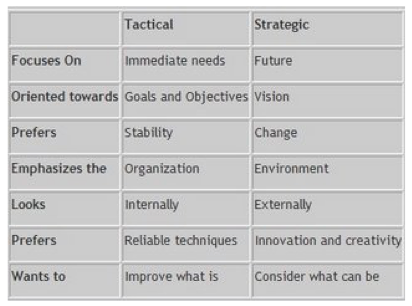Blog
Do You Have a Technology Strategy for 2016?
December 10, 2015
Posted by: Peter Marcum
A lot of things have changed in 2015 and a lot more will continue in 2016.
If I have learned anything about business is that change is a constant, and you can either be managed by it or you can manage it to your advantage. I like having an advantage in a marketplace with heated competition so learning to anticipate and manage change is to our advantage—and yours as well.
One of the many things I’ve come to appreciate about business has to do with understanding the differences between leveraging strategies versus tactics in a changing world. One gives you a long term view while the other enables you to deal with short term issues. But one without the other is a ship without a rudder. For instance when businesses think about technology today most think about it as a department or supplier. The fact is that technology is quickly becoming everybody’s business—not just those that supply it. Given that context, every business has to rethink their strategy with the perspective of what technology will enable them to meet their business objectives. That alone is a big shift in thinking for most businesses.

Business people use "strategy" to describe the organization’s topmost goal in its marketplace, whether the organization is a start-up company, a huge multinational firm, a university, or a government agency. One of the biggest problems is that many organizations don’t have clear strategies especially when it comes to understanding the role technology plays in fulfilling those strategies.
If anyone in the firm knows the company strategy and that person hasn’t told anyone else, then tons of other people wander around trying to figure out what’s important—how technology can help them and connect them (and others) to the right people, places and things—and what to focus on in their work. They know the tactics. For instance, they know their monthly and quarterly goals, but they don’t know the higher-level technology strategy that ties everything together, and how their goals and their work helps to achieve the bigger picture. In other words people feel stuck in an information silo disconnected, all while be surround by technology that is supposed to connect them. And they wonder who is driving this aimless car? Sound familiar?
That’s a huge problem. Why should anyone get excited about their activities at work when they have no idea what all their hard work is supposed to achieve?
2016 and Beyond...
So why do you need to think about your technology strategy? Because it is not just about technology as much as it is about how to use technology to the advantage of your business. Once you start thinking this way then you can begin to think about the possibilities of the technology. Putting the technology first is a big mistake until you realize technology is your business. Now think about that a while.
Technology is moving way beyond a simple business presence website. The Internet of Things (IoT) is becoming a force that is driving innovation and new opportunities by bringing every object, consumer, and activity into the digital realm. At the same time, leading businesses are making similar changes within their enterprises by digitizing every employee, process, product, and service.
Taken in aggregate, enterprises find themselves connected to a technological eco-system that has the potential to touch all aspects of their business, their customer relationships, and the world around them.
More and more, however, companies are beginning to see that these connections are not just limited to their employees and customers. They also have the potential to tie themselves into a global network of businesses, individuals, and things from every industry around the world.
This grand network of connections and its transformational power introduce a new era in the digital age—the age of “digital ecosystems.”
Pioneering companies have already realized the implications of tapping into a digital ecosystem. They see that in such digitally driven, hyper-connected times, they have the capacity for action beyond transforming themselves into digital businesses.
Einstein once said, “If I had an hour to solve a problem, I’d spend 55 minutes thinking about the problem and 5 minutes thinking about the solution.” The prescriptive rationale behind Einstein’s example is that he did NOTHING without great amounts of rigorous thought preceding any action. Most of us do the opposite when it comes to thinking strategically about technology.
Happy New Year.
